Arthur Ashkin
Biographical
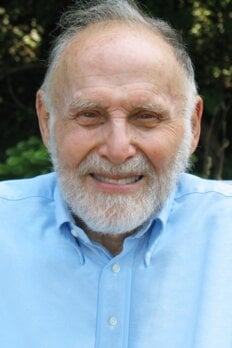
A
rthur Ashkin’s father, Isadore Ashkenazi, was born in Tsarist Russia in 1891. Isadore was brought up with his older brother, Harry, both shown in Figure 1, in an orphan asylum and never told of the circumstances of how they ended up there. As it turned out, his brother made the mistake of not leaving Russia by the age of 18. That meant that he was subject to army service, which at that time was akin to a death sentence or prison. The solution to this problem was to use the passport of his younger brother and leave immediately, in 1910. After getting to America he could simply mail the passport back to Isadore for his use in leaving Russia. A serious problem arose when the passport never arrived. Isadore was now stateless, but he found a man who, in exchange of his accumulated savings, would arrange passage for him on a sealed train to Holland, and then steerage on a boat headed to New York. Despite his doubts, the arrangement worked out and Isadore found himself on Ellis Island, greeted by his brother, and accepted in the country. An agent changed his name to Ashkin to make it sound more American.
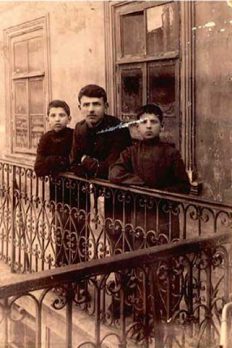
Figure 1. Isadore − father of Arthur − and his older brother Harry in Kiev, Ukraine (circa 1908).
Since Isadore was a “good boy” in the orphanage, he was trained as a dental technician. Once in the United States he found employment and soon opened his own business, which flourished.
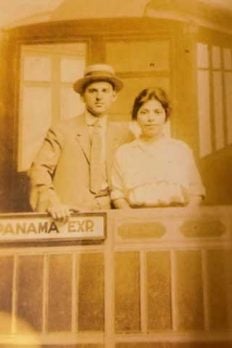
Figure 2. Father Isadore and mother Anna at Coney Island (circa 1925).
He was soon able to marry Anna Fishman, also an immigrant, born in 1895, who arrived at 2 years of age with her family from what is now Poland. They can be seen in Figure 2 as a young couple at Coney Island. They found lodgings in Brooklyn and soon had a family: a boy named Julius, a second son, two years younger, named Arthur, and a daughter named Ruth, five years younger. Anna and her three children can be seen in Figure 3, a photo taken in the late 1960s. Julius was a brilliant student, skipping several grades in elementary school and eventually earning a PhD in Physics from Columbia University at age 22. During World War II he worked on the atom bomb at Los Alamos and after the war taught at Rochester University and Carnegie Tech. He eventually became the head of the physics department at Carnegie Tech.
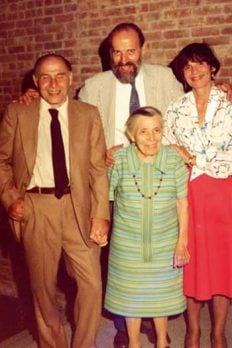
Figure 3. From left to right: Arthur, his brother Julius, his mother Anna and his sister Ruth (late 1960s).
Their daughter, Ruth, Arthur’s younger sister, majored in Greek and Latin, and a number of years later she earned a master’s degree in Greek. However, she became a school teacher and devoted herself to teaching underprivileged children in a Brooklyn elementary school.
Ashkin is the product of Brooklyn’s public school system during the Great Depression. He showed an early interest in science. As a ten year old he was fascinated by the Crookes radiometer. Seeing one in a pharmacist’s window, he soon had one of his own. He understood the thermal effect of light causing molecules of air, under low pressure, to cause the movement of the vanes forward from the blackened side. A few years later, after exposing the radiometer outside for some time to make it hotter, he brought it back inside the house. It started to spin in the opposite direction, the same direction as if it was driven by light pressure.
In 1940 he enrolled at Columbia College with a major in physics, but his education was soon interrupted by the entry of the United States in World War II. He was drafted into the army but spent the war years as a technician at Columbia University’s Radiation Lab, where he built magnetrons for radar. While at the Radiation Lab he was mentored by Sid Millman, who later became a department head at Bell Labs. After the war he completed his bachelor’s degree and earned his Phi Beta Kappa key in his junior year. As a graduate student at Cornell University under the G. I. Bill, he earned his PhD doing electron-positron scattering under Professor Bill Woodward.
After getting his PhD, Arthur Ashkin was remembered by Millman at Bell Labs, who hired him. At Bell he initially worked on electron tubes for communication. He felt working in nuclear physics would put him in competition with his brother. He resented being called “Ashkin’s brother Ashkin” by his brothers’ colleagues. He switched to laser work in the early sixties. He had long been interested in how the momentum of light photons could be used to move matter. He formed the two-beam laser trap early on and in 1970 published his first paper on optical trapping.1 The subject of the paper was the two-beam trap, but it also spoke of the possibility of trapping atoms, molecules and small particles. As a manuscript to be submitted to Phys. Rev. Lett., it had to be reviewed by the Theoretic Physics Department in order not to besmirch the Lab’s high reputation. It was rejected on three grounds:
- There was nothing new;
- There was nothing wrong with the work – a comment reminiscent of the “Pauli insult”*;
- It could be published somewhere, but not in Phys, Rev.
Ashkin’s boss, Rudi Kompfner, was irate and simply said, “Damn it! Just send it in.” It was immediately accepted. It was published and became the most referenced paper of that year. At over 5,000 citations it was one of the one hundred best atomic physics papers of the last century, as named in “The Physical Review the First Hundred Years, a Selection of Seminal Papers and Commentaries.” In 1971, Ashkin achieved levitation of small glass spheres, which were used in many important experiments, such as the optical Millikan oil droplet experiment. Finally, he made his famous single beam tweezer trap 2 in 1983. He can be seen near the optical tweezer apparatus in Figure 4, a photo which was taken soon after the discovery for which he would be awarded the Nobel Prize.
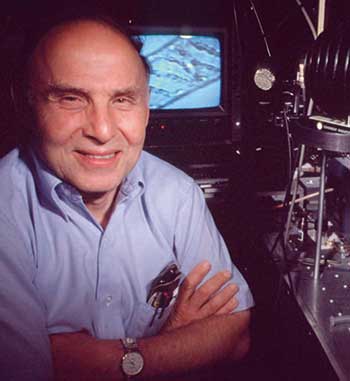
Figure 4. Arthur next the optical tweezer apparatus, with the image of a scallion cell in the background in 1988.
His work has been both widely used and widely recognized. He is a member of the National Academy of Engineering and the National Academy of Sciences, as well and the National Inventors Hall of Fame. He has been elected Fellow of the APS, the OSA, the IEEE, and the AAAS. He has received numerous awards, among them the Harvey Prize, the Rank Prize, the Keithly Prize, the Townes Award, and the Ives Prize. His most recent award is the 2018 Nobel Prize in Physics for Optical Tweezers for Application to Biological Systems. At 96 he is the oldest recipient of the Nobel Prize. It is generally recognized that he should have been included in the 1997 award, since optical tweezers were used to trap atoms in the prize-awarding experiments. After difficulties with atom trapping, Ashkin and Dziedzic trapped 20 Angstrom plastic spheres to demonstrate the ability of optical tweezers to trap particle of approximatively atomic size. Subsequently, successful atom trapping using the same technique was demonstrated.
Art Ashkin and his wife, Aline, have been happily married for almost 65 years. They met at Cornell, on the shore of Lake Cayuga. She was on a Cornell Outing Club excursion and he was occupied with his prospector’s pick, splitting rocks of shale looking for fossils. She was curious about what he was doing. A conversation was struck up and they both realized that something special was happening. He asked for her phone number and she willingly gave it to him. She was a junior at Cornell, majoring in chemistry and he was finishing his PhD in nuclear physics. Two years later, after she graduated in 1954, they were married. They settle in Bernardsville, New Jersey and had three children. When Bell Labs opened a new laboratory in Holmdel, New Jersey, they moved to Rumson, New Jersey, where they have been living for the past 52 years. Once the children were all off to school, Aline started working as a high school chemistry teacher. She pursued that for fifteen years, obtaining a master’s degree in science education along the way.
Their children did well. The oldest, Michael, and the youngest, Daniel, both went to the University of Pennsylvania. Michael’s major was in Hebrew and Arabic; Daniel’s was in Earth Science and Geology. Their daughter, Judith, went to Cornell to major in Spanish and Portuguese.
Today, Michael is chair and professor of art in Cornell’s School of Art, Architecture, and Planning. Judith teaches Tai-Chi and recently completed a Master’s Degree in Acupuncture. Daniel, with a PhD in Ceramic Science from Rutgers University works on ceramics for CoorsTek, a company run by the same family who also make Coors beer.
Art and Aline are the sole survivors of their families. The parents of both are deceased as are their siblings. His brother and sister both died in their early sixties, as did her brother. Art and Aline are still alive, enjoying their five grandchildren and two great grandchildren. A recent photo of Aline and Art (left) is shown in Figure 5. It was taken on October 9, 2018, at the top of Crawford Hill in Holmdel, New Jersey, part of the laboratory of the same name at Bell Labs. They are in company of Bob Wilson and his wife Betsy (right). Bob who also spent his career at Bell Labs, did the work for which he was awarded the 1978 Nobel Prize in Physics on that same hill.
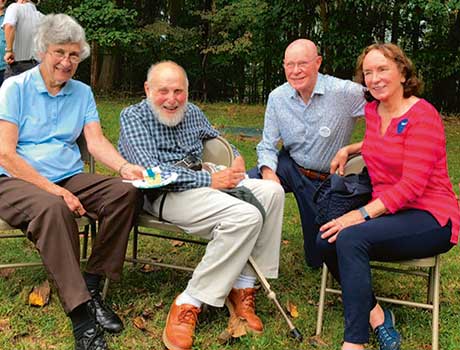
Figure 5. From left to right: Arthur and his wife, Aline, Bob Wilson and his wife Betsy in October 2018 in Holmdel, New Jersey.
* The comment for which theoretical physicist Wolfgang Pauli (1900–1958) is perhaps known combines utter contempt on the one hand with philosophical profundity on the other. “This isn’t right,” Pauli is supposed to have said of a student’s physics paper. “It’s not even wrong.”
References
1. “Acceleration and Trapping of Particles by Radiation Pressure,” A. Ashkin, Physical Review Letters, 24, No. 4, Jan. 26, 1970 (pp. 156–159).
2.“Observation of a single-beam gradient force optical trap for dielectric particles,” Ashkin, et al. Optic Letters, 11, May, 1986 (pp. 288–290).
This autobiography/biography was written at the time of the award and later published in the book series Les Prix Nobel/ Nobel Lectures/The Nobel Prizes. The information is sometimes updated with an addendum submitted by the Laureate.
Arthur Ashkin died on 21 September 2020.
Nobel Prizes and laureates
Six prizes were awarded for achievements that have conferred the greatest benefit to humankind. The 12 laureates' work and discoveries range from proteins' structures and machine learning to fighting for a world free of nuclear weapons.
See them all presented here.
